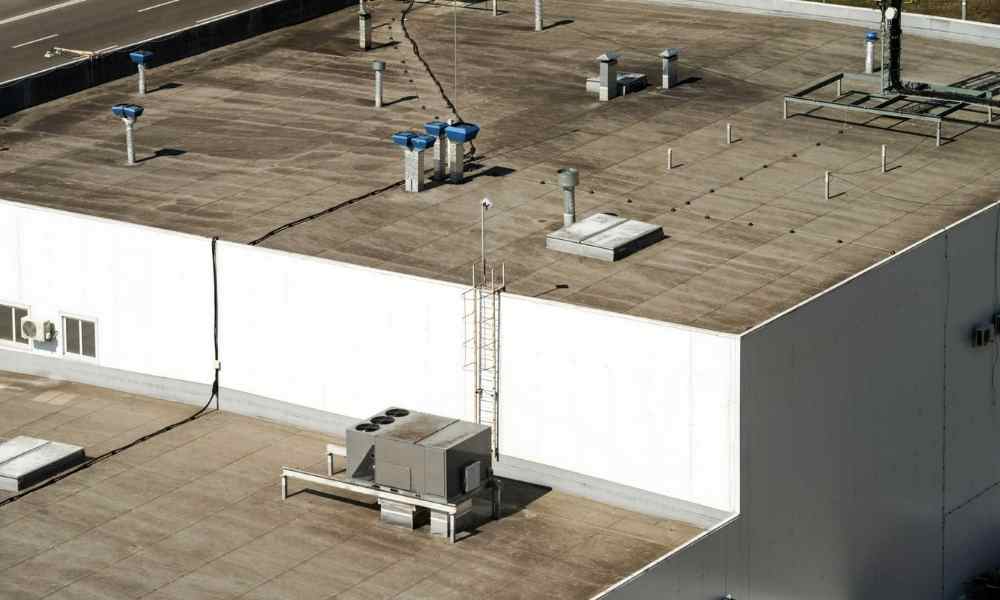Air Cooled vs Water Cooled Chiller: Understanding the Differences

Did you know that the HVAC chillers market size in the USA is expected to reach $12,878.92 million by 2028? This includes ventilation, heating, air conditioning, and industrial refrigeration equipment.
The usage of a chiller is critical to maintaining a comfortable environment. Various industries use chillers, and they play an essential role. They help with everything from maintaining the ambient temperature of data centres to keeping your food chilled until it reaches the market.
Typically chillers fall under two main categories: air-cooled and water-cooled. Since they both have the same function, what are the benefits of air-cooled vs water-cooled chiller? And which do you choose: a water-cooled vs air-cooled chiller?
There are numerous factors to consider when deciding between renting an air-cooled or water-cooled system. Read on to learn all about them.
A Chiller: What Is It?
Chillers have become a vital heating and cooling component in many commercial facilities. These include:
● In computer data centres
● In hotels
● In restaurants
● In hospitals
● At sports centres
● In industrial and manufacturing plants, and so on
As stated before, a chiller facilitates heat transfer from within to outside. This heat-transfer device employs a refrigerant’s physical qualities to transmit heat. Without a doubt, chillers can serve as the centre of any core HVAC system.
How Does a Chiller Function?
A chiller works through vapor compression or absorption.
In a process water system, a chiller maintains a temperature of 50°F (10°C) on the cold side. As the coolant runs back to the return cycle of the process water system, it extracts heat from one portion of the site (e.g., computer data centre machinery, medical processing equipment, etc.).
The steps in this process include:
● An evaporator connects the mechanical refrigeration unit of a chiller to the process water system
● A chiller’s evaporator, compressor, condenser, and expansion device circulate refrigerant
● Each of the chiller’s above components undergoes a thermodynamic process
● The evaporator acts as a heat exchanger, transferring heat collected by the process liquid flow to the refrigerant
● The refrigerant vaporizes, shifting from a liquid to gas as the heat transfer occurs, while the heat of the process coolant decreases
● The refrigerant then passes to a compressor
When the refrigerant passes through the compressor, it serves several purposes.
First, it drains coolant from the evaporator and maintains pressure to absorb heat. Second, it raises the pressure of outgoing refrigerant vapor, which keeps it hot enough to release heat at the condenser.
Also Read: Importance of Branding in Digital Media
The condenser returns the refrigerant to liquid to complete the cycle. A cooling medium removes heat from the refrigerant as it liquefies, and this cooling medium could be air or water.
Air Chiller Types
Two cooling channels, air or water, can help transfer latent heat as refrigerant converts from gas to liquid. Therefore, chiller rental companies rent out chillers with either air-cooled or water-cooled condensers.
Air-Cooled
Air-cooled condensers are similar to the radiators that keep a car’s engine cool. You use a motor-driven blower to move air across a system of refrigerant rows. Air-cooled condensers need 95°F (35°C) or less to work efficiently.
As discussed, air-cooled chillers depend on an air-cooled condenser. As a result, you will use air-cooled chiller systems in smaller or medium-sized installations with limited space. If water is scarce, an air-cooled chiller is the most practical option.
Impeller fans or mechanical cooling cycles can be used in an air-cooled chiller. This would be to draw airflow over a finned coil to condense the coolant. The condenser’s condensation of coolant vapor facilitates heat transfer to the air.
Air-cooled chillers have the considerable advantage of being less expensive to install. Because they are less complicated than water-cooled chillers, they need less maintenance.
Air-cooled chillers will take up less space but will often be found outside buildings. As a result, the open-air elements will shorten their functional lifespan.
Air-cooled chillers’ all-inclusive design reduces maintenance costs. Their compact shape saves space and benefits many applications.
Water-Cooled
Water-cooled chillers do the same job as air-cooled chillers, but with two steps. First, you transfer the heat from the refrigerant gas to the water in the condenser. The warm condenser water is then pumped to a cooling tower, where the heat is eventually released into the air.
Water-cooled chillers consist of a condenser connected to a cooling tower by a water-cooled condenser. They are frequently used in medium and large establishments with an adequate water supply.
Water-cooled chillers are more reliable for industrial and commercial chillers. This is because they are not affected by changes in outside temperature.
Water-cooled chillers are available in a range of sizes. These sizes vary from small 20-ton versions to several thousand-ton ones that cool the world’s largest buildings. These buildings include shopping malls, airports, and other structures.
A standard water-cooled chiller system condenses the refrigerant by re-using condenser water out of a cooling tower.
Water-cooled chillers are typically housed indoors in a climate-controlled setting. This means that it’s shielded from the outdoors, and therefore it will have a longer service life.
For larger installations, water-cooled chillers are typically the only option. However, installation and maintenance expenses will be higher than for air-cooled chillers.
Comparing an Air-Cooled vs Water-Cooled Chiller
So which to choose: air-cooled vs water-cooled chiller? When buying or renting a chiller, one factor is its overall qualities.
Indoor aircon systems can be either air-cooled or water-cooled. However, air-cooled machines need exterior circulation to get enough fresh air to keep your room at a comfortable temperature. In contrast, a water-cooled chiller does not require ventilation; you need water to take the heat out of the environment.
Outdoor air-cooled chillers have the advantage since they get more fresh air, and their condenser’s heat can evaporate into the air. This type of installation only requires correctly configured electrical control panels.
You can use the information above to decide to rent either an air-cooled or a water-cooled chiller. However, if you need assistance choosing between the two systems, please don’t hesitate to contact us. We take pride in our customer service!
Also Read: What will be the Future of eCommerce?





![Best Online Invoice Generator Tools Free and Paid Tools in [2021]](https://www.scrolltrendy.com/wp-content/uploads/2021/07/Invoice-Generating-Online-800x450.jpg)
